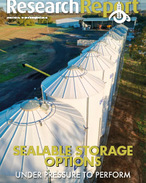This article is 5 years old. Images might not display.
Previous research by the University of Adelaide through a Grains and Research and Development Corporation (GRDC) investment has shown that frost, particularly before clethodim application, reduces the herbicide's activity in susceptible annual ryegrass populations.
The research demonstrated that clethodim efficacy was further reduced in resistant annual ryegrass populations regardless of whether the frost event was prior to or post clethodim application. However, the impact was much greater when frost occurred before application of clethodim.
University of Adelaide associate professor in weed and crop ecology, Gurjeet Gill, said frosty conditions make it even harder to control annual ryegrass when clethodim resistance is present in the population.
"Growers are advised to carefully review weather forecasts for their district and spray clethodim when cloud cover is present and the risk of frost occurrence is low," Gill said.
"Ideally, spray small ryegrass plants under warm and frost-free periods for the best results with clethodim. In many cases, clethodim still provides reasonable ryegrass control provided weeds are sprayed early and at a time when frost is unlikely to occur two to three days before or after spraying," Gill said.
In order to extend the effective life of clethodim, it is important to maintain ryegrass populations at a low level by integrating pre-emergence herbicides and other tactics such as crop-topping, maximising crop competition and harvest weed seed control.
"The use of weed-suppressive hybrid canola can considerably boost overall clethodim performance on ryegrass. Crop competition should be viewed as an ally in the control of herbicide-resistant annual ryegrass," Gill said.
More information on the impact of frost on clethodim efficacy and clethodim resistance visit: https://bit.ly/30LUdVG
Advice on optimising the use of clethodim, visit the GRDC fact sheet at: https://grdc.com.au/optimising-group-a-herbicides-in-canola.























